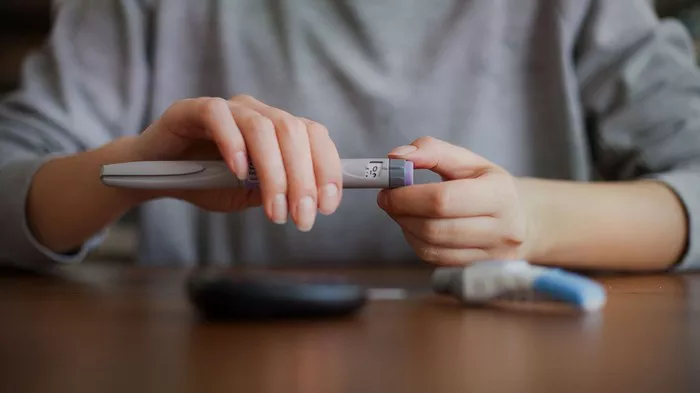Hyperglycemia, or high blood glucose, is a condition primarily associated with diabetes. It occurs when there is an excessive amount of sugar (glucose) circulating in the bloodstream, which can happen due to a lack of insulin or the body’s inability to use insulin efficiently. Insulin is the hormone responsible for facilitating the absorption of glucose into cells, where it is used for energy. Persistent hyperglycemia can lead to a variety of complications, affecting multiple organs and systems in the body.
This article explores the different organs that are involved in hyperglycemia and explains how each organ is impacted by elevated blood sugar levels.
The Role of the Pancreas in Hyperglycemia
The pancreas is the central organ involved in the regulation of blood glucose levels, and it plays a direct role in hyperglycemia.
Insulin Production: The pancreas contains clusters of cells known as the islets of Langerhans, which produce hormones that regulate blood sugar. Beta cells in the islets are responsible for producing insulin, the hormone that lowers blood glucose by promoting the uptake of glucose into cells.
Impaired Insulin Production: In conditions like Type 1 diabetes, the immune system mistakenly attacks and destroys these beta cells, leading to insufficient insulin production. In Type 2 diabetes, the pancreas may initially produce insulin, but over time, its function becomes impaired due to the constant demand to produce more insulin to overcome insulin resistance.
Glucagon Secretion: Alpha cells in the pancreas produce glucagon, a hormone that raises blood sugar by stimulating the liver to release glucose stored as glycogen. In hyperglycemia, the regulation of glucagon can be impaired, further contributing to blood sugar imbalances.
The Liver’s Role in Hyperglycemia
The liver is another key organ involved in glucose regulation and can contribute to hyperglycemia when its functions are disrupted.
Glucose Storage and Release: The liver stores glucose in the form of glycogen and releases it into the bloodstream when blood sugar levels are low, such as between meals or during periods of fasting. This process is regulated by hormones, primarily insulin and glucagon.
Increased Gluconeogenesis: In people with diabetes or insulin resistance, the liver may produce too much glucose through a process called gluconeogenesis, in which the liver converts non-carbohydrate sources into glucose. When insulin levels are insufficient or cells are resistant to insulin’s effects, the liver continues to release glucose even when blood sugar levels are already high, exacerbating hyperglycemia.
Glycogenolysis: This is the process by which glycogen stored in the liver is broken down into glucose. Insulin typically inhibits this process when blood glucose levels are high, but in hyperglycemia, this regulatory mechanism may be impaired, leading to excessive glucose release.
Muscles and Hyperglycemia
Skeletal muscles are a significant site for glucose uptake and storage, and their role in hyperglycemia is crucial.
Glucose Utilization: Insulin facilitates the entry of glucose into muscle cells, where it is either used immediately for energy or stored as glycogen for later use. In people with insulin resistance or Type 2 diabetes, muscles may not respond adequately to insulin, resulting in reduced glucose uptake and higher blood sugar levels.
Impact of Exercise: Exercise enhances glucose uptake by muscles, even in the absence of insulin, which is why physical activity is a critical component of managing hyperglycemia. When muscles are active, they use more glucose, which can help lower blood sugar levels in individuals with hyperglycemia.
Muscle Insulin Resistance: In individuals with insulin resistance, muscles become less responsive to insulin’s effects, which reduces the ability of muscles to absorb glucose from the bloodstream. This contributes significantly to the development of hyperglycemia.
The Adipose Tissue’s Role in Hyperglycemia
Adipose tissue, or body fat, is not just a storage site for energy but also plays a role in glucose metabolism and insulin sensitivity.
Insulin Resistance and Fat Cells: Adipose tissue can contribute to insulin resistance, a hallmark of Type 2 diabetes. As fat cells increase in size (particularly in cases of obesity), they release inflammatory markers that interfere with insulin’s ability to regulate glucose uptake, contributing to hyperglycemia.
Lipolysis and Hyperglycemia: In states of insulin resistance or inadequate insulin production, adipose tissue may release more fatty acids into the bloodstream through a process called lipolysis. These fatty acids can travel to the liver, where they are used to produce more glucose, exacerbating hyperglycemia.
The Kidneys and Hyperglycemia
The kidneys play a vital role in filtering blood and managing glucose levels in the body. However, hyperglycemia can significantly affect kidney function.
Glucose Reabsorption: Under normal circumstances, the kidneys filter blood and reabsorb glucose back into the bloodstream, preventing it from being lost in urine. However, when blood sugar levels are too high, the kidneys may become overwhelmed and start excreting excess glucose in the urine, a condition known as glucosuria.
Diabetic Nephropathy: Prolonged hyperglycemia can damage the delicate blood vessels in the kidneys, leading to diabetic nephropathy, a type of chronic kidney disease. This damage can impair the kidneys’ ability to filter waste from the blood, eventually leading to kidney failure if left untreated.
Increased Urine Production: Excess glucose in the urine can lead to increased urine production (polyuria), as the kidneys work harder to excrete the excess sugar. This can cause dehydration, which further complicates blood sugar management.
The Cardiovascular System and Hyperglycemia
Hyperglycemia can have profound effects on the cardiovascular system, increasing the risk of heart disease, stroke, and other vascular complications.
Atherosclerosis: Persistent high blood sugar levels contribute to the formation of plaques in the arteries, a condition known as atherosclerosis. These plaques can restrict blood flow, increasing the risk of heart attacks and strokes in people with hyperglycemia.
Damage to Blood Vessels: High glucose levels can cause damage to the endothelial cells that line blood vessels, leading to vascular complications. Over time, this damage increases the risk of hypertension (high blood pressure), heart failure, and other cardiovascular issues.
Impaired Blood Flow: Reduced blood flow to vital organs, such as the heart and brain, due to hyperglycemia can lead to severe complications. Peripheral artery disease, which affects circulation to the limbs, is another concern for people with prolonged hyperglycemia.
The Nervous System and Hyperglycemia
The nervous system is also impacted by chronic hyperglycemia, particularly the peripheral nerves.
Diabetic Neuropathy: Prolonged high blood sugar levels can damage nerves throughout the body, leading to a condition known as diabetic neuropathy. This condition often affects the peripheral nerves, causing symptoms such as tingling, numbness, pain, and weakness, particularly in the hands and feet.
Autonomic Neuropathy: Hyperglycemia can also affect the autonomic nervous system, which controls involuntary functions such as digestion, heart rate, and bladder function. Autonomic neuropathy can lead to complications such as gastroparesis (delayed stomach emptying), abnormal heart rates, and bladder dysfunction.
The Eyes and Hyperglycemia
One of the most well-known complications of hyperglycemia is its effect on vision and eye health.
Diabetic Retinopathy: Chronic hyperglycemia can damage the tiny blood vessels in the retina, leading to diabetic retinopathy. This condition is one of the leading causes of blindness in people with diabetes. Retinopathy can range from mild, non-proliferative forms, where blood vessels leak fluid, to more severe proliferative retinopathy, where new, abnormal blood vessels form and can lead to retinal detachment and vision loss.
Cataracts and Glaucoma: People with hyperglycemia are also at an increased risk of developing cataracts (clouding of the eye’s lens) and glaucoma (increased pressure in the eye), both of which can lead to vision impairment or loss.
The Immune System and Hyperglycemia
Hyperglycemia can weaken the immune system, making it harder for the body to fight infections.
Impaired White Blood Cell Function: High blood sugar levels can impair the function of white blood cells, which are critical for fighting infections. This makes people with hyperglycemia more susceptible to infections, including skin infections, urinary tract infections, and respiratory infections.
Delayed Wound Healing: Hyperglycemia can also affect the body’s ability to heal wounds, as elevated glucose levels hinder the repair of damaged tissues. This is particularly concerning for individuals with diabetic neuropathy, as they may not feel injuries or ulcers, especially in their feet, leading to delayed treatment and complications like infections or even amputations.
See also: What C-Peptide Level Indicates Type 1 Diabetes?
Conclusion
Hyperglycemia is a complex condition that affects multiple organs and systems in the body. The pancreas, liver, muscles, kidneys, cardiovascular system, nervous system, eyes, and immune system are all involved in the regulation of blood sugar and are impacted by elevated glucose levels. Understanding how each of these organs contributes to hyperglycemia can help individuals manage their condition more effectively and prevent long-term complications. Through proper management, including regular blood glucose monitoring, insulin therapy, diet, exercise, and medical care, the damaging effects of hyperglycemia on these organs can be minimized, improving overall health and quality of life.
Related topics:

























